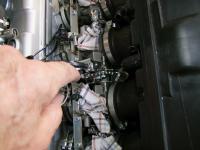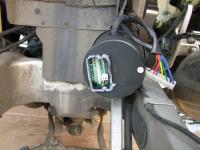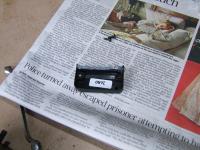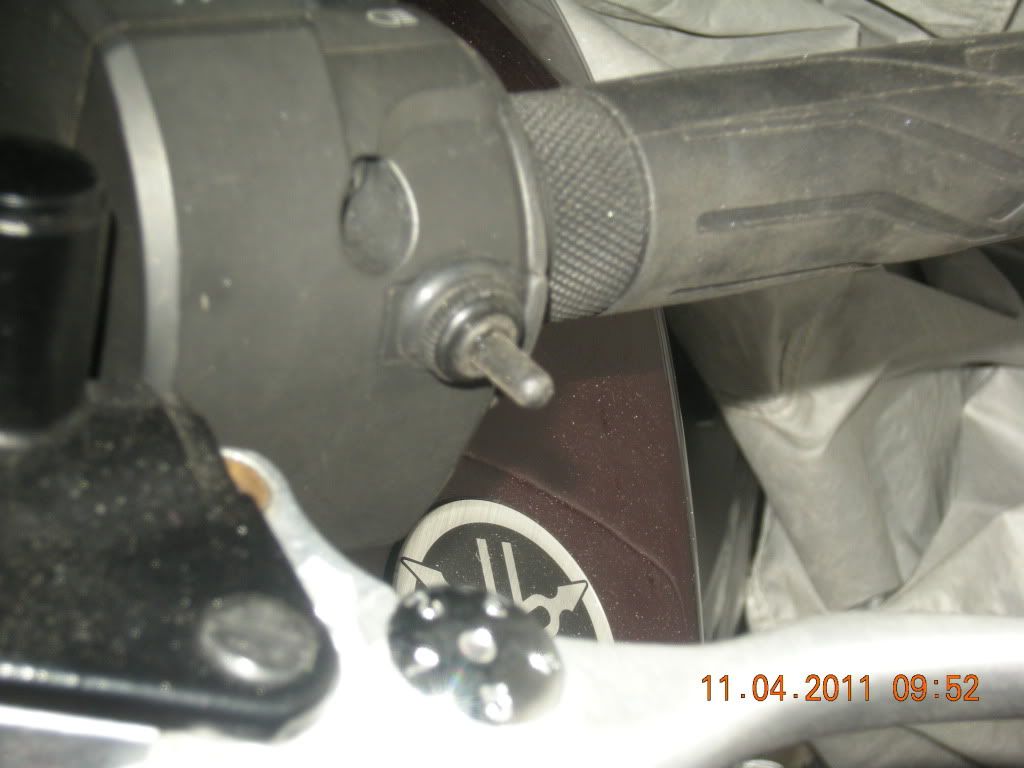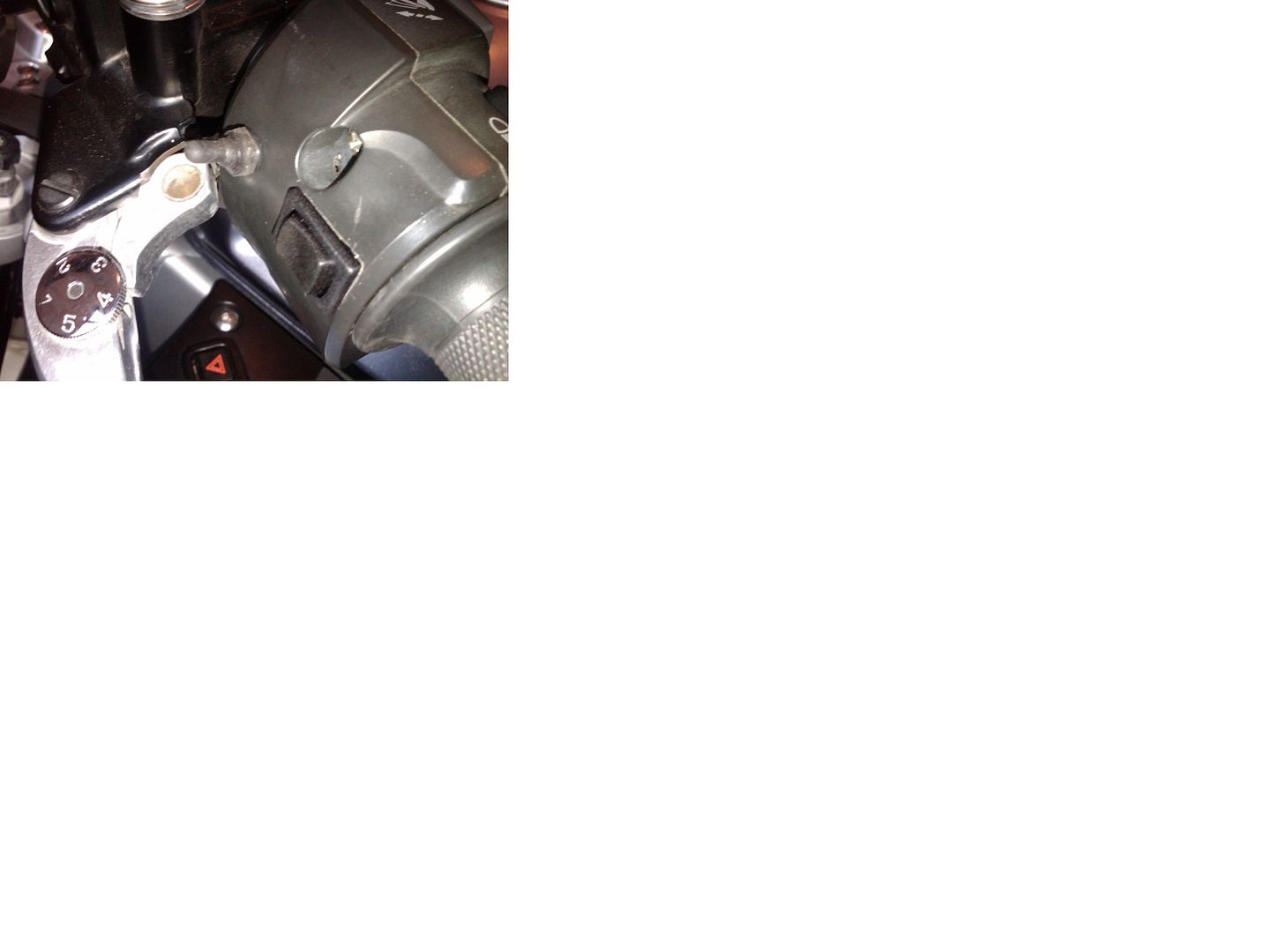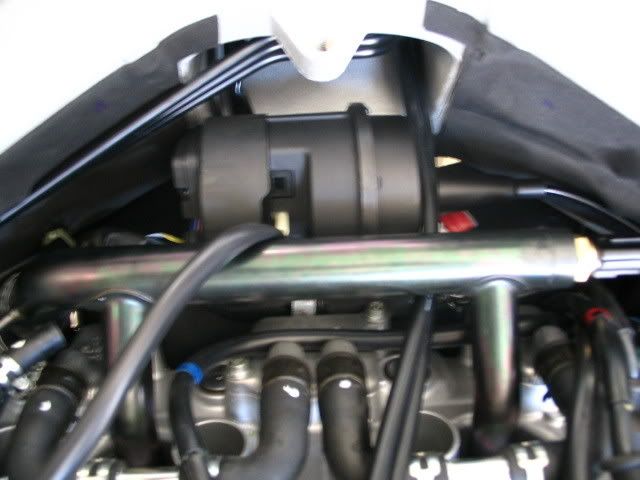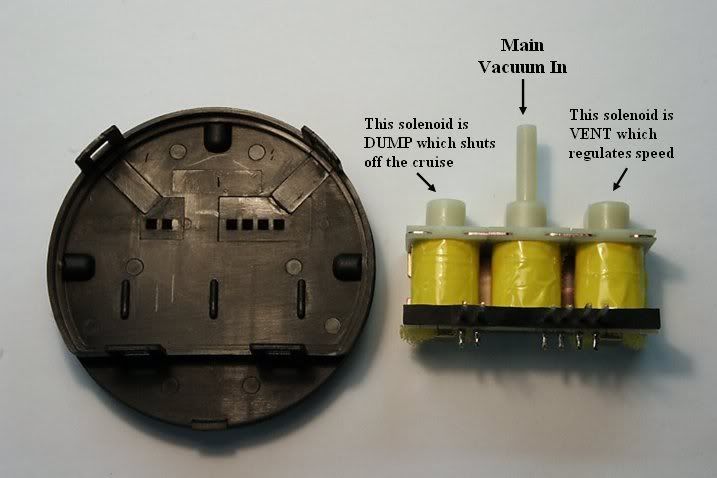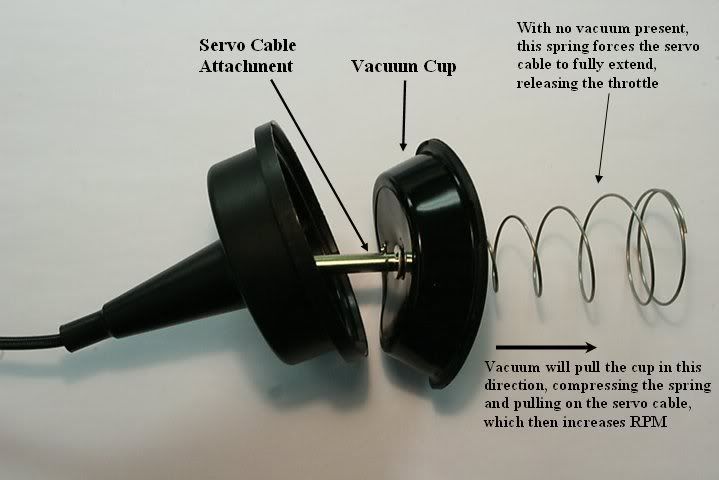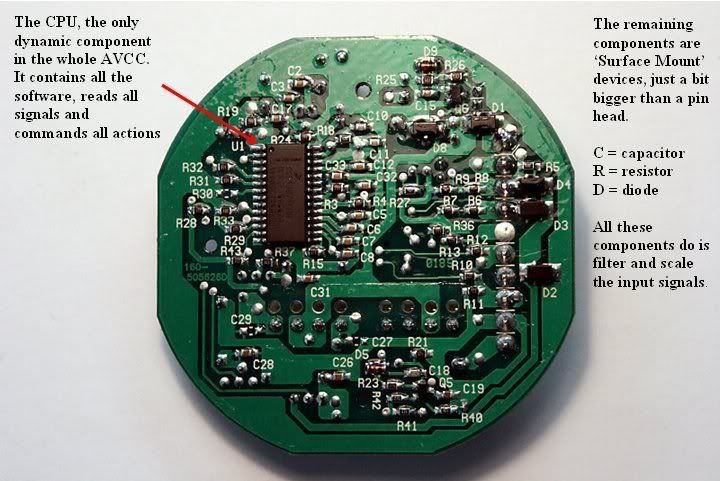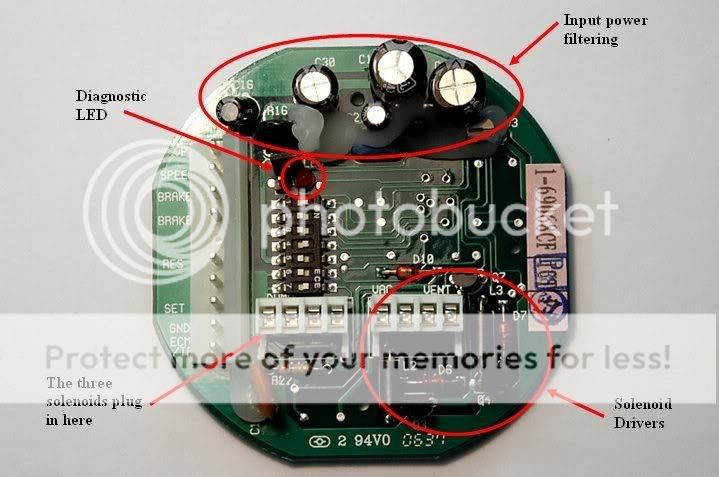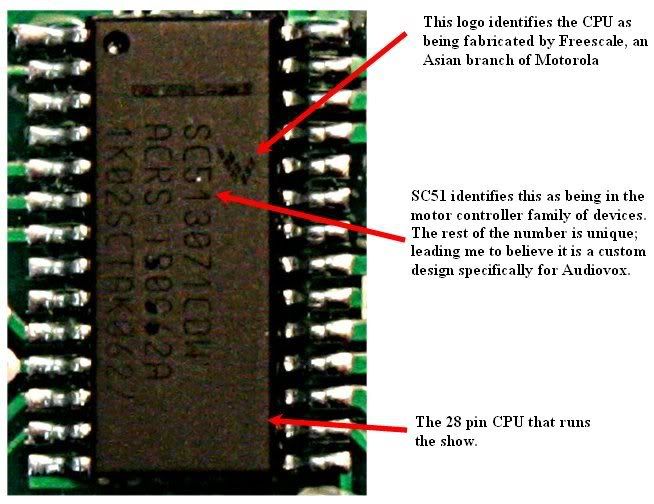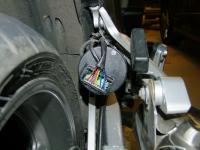mcatrophy
Privileged to ride a 2018 FJR1300AS
The only reason I went to an FJR was because my left little finger was in agony after using the clutch lever for more than a few gear changes (my body is older then my mind), so Yammy's YCC-S was a godsend.
Recently my right little finger has started to complain when on extended trips, brought to a head on the Continental trip I did earlier in the year, where it was giving me strong suggestions that I needed to do something about it. I've already unwound the throttle spring and improved the grip to reduce hand pressure, but it's getting worse.
The obvious aid to allow me to continue riding is a cruise control.
I did a lot of ferreting around here and elsewhere, and made the decision to go with the Audiovox CCS100, all part of a price/performance/ease of mounting compromise. Purchased from Murphys' (no comebacks
 ), it took about 1 day to get to UK customs and a further 3 days to get to me (including the time to ask me for import duty and VAT).
), it took about 1 day to get to UK customs and a further 3 days to get to me (including the time to ask me for import duty and VAT).
I took my time over fitting it, and went down some wrong routes in the process, but the final fitment looks OK and seems to work reasonably well. I only needed a bit more vacuum pipe, a few nuts and bolts, heat-shrink insulation and a piece of aluminium sheet for a control mounting bracket. And plastic wire ties. Lots of plastic wire ties.
For my full pictorial record of what I did (including my mistakes the blind alleys I went down all my experimentation), click here.
A few sample pics (click on image for larger view):
Actuator and vacuum reservoir mounting (pictures enhanced to show detail, they're much less obvious in reality)

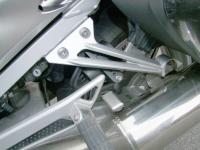
Couple of views of the control panel (beside my heated vest controller)
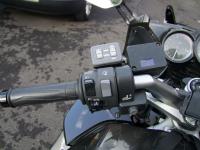
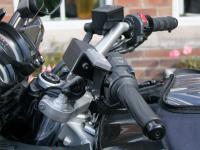
Detail of the throttle cable connection and the under-tank run of the actuator cable
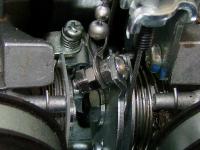
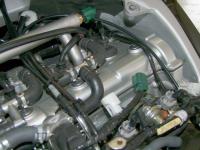
When I came to test it, It took about three minutes to get used to it taking over the throttle. It might take you longer if you're not used to a car cruise control, it's initially a weird sensation to have the throttle taken out of your control.
In operation I have to say it's not perfect. The basic problem is that once in control, it moves the throttle very slowly. This exhibits itself in a number of ways, e.g. you are in manual doing your wanted speed. You press the "SET" button. After a very short delay, the throttle does a little jerk and increases speed a little as the actuator takes over, it than takes several tens of seconds to slow down to the set speed. Also, when you meet a hill, the bike will change speed, then very gradually haul back to the set speed. Takes a bit of getting used to when the cruise control in my (wife's) car is almost seamless.
Using the "Accel" and "Coast" switches is a waste of time.
Possibly changing the DIP switch settings for Medium would improve this, I may experiment later (I'm doing nothing to disturb it until after another week touring in Scotland in a few days time
 . Taking son on his Hornet, his first tour, but that's another story).
. Taking son on his Hornet, his first tour, but that's another story).
Couple of other things, when changing gear it doesn't always unset. With a conventional gear-change, if you pull the clutch the engine speed immediately rises which tells the actuator to disengage. With YCC-S, just flicking from 5th to 4th (which I often do to initiate a deceleration) is so fast a change that the engine speed merely slurs to the new rpm, and often doesn't "excite" the actuator into disengaging. This is a nuisance because there is no "unset" control, so you have to touch the brake (or turn the control off) when you realise it's started to control the speed in the new gear. Possibly fitting the vehicle speed sensor would fix this. The lack of an unset control also means that when coming up to slower moving traffic you have to touch the brake rather than just closing the throttle.
Don't think from the above that I'm disappointed, I'm not. These issues all came out in my investigations (except the unreliable gear change unset). The first time I used it on a main road, after about five minutes I realised my right hand was so much more relaxed than usual. The nagging discomfort that I was always trying to ignore had disappeared. This (and not having to watch out for my speed so much with all our speed cameras) makes the few compromises well worth while.
[edit]
I later found that my sealing of the actuator meant the vacuum couldn't be released quickly, this led to the poor behaviour. It was very significantly improved after I provided an air vent into the actuator body, see posts #14 and #22.
(With many thanks to ionbeam for providing info on the insides of the actuator and making me think.)
[/edit]
Below are some of the references I used. Apologies to anyone whose ideas I've used but I haven't acknowledged.
Recently my right little finger has started to complain when on extended trips, brought to a head on the Continental trip I did earlier in the year, where it was giving me strong suggestions that I needed to do something about it. I've already unwound the throttle spring and improved the grip to reduce hand pressure, but it's getting worse.
The obvious aid to allow me to continue riding is a cruise control.
I did a lot of ferreting around here and elsewhere, and made the decision to go with the Audiovox CCS100, all part of a price/performance/ease of mounting compromise. Purchased from Murphys' (no comebacks
I took my time over fitting it, and went down some wrong routes in the process, but the final fitment looks OK and seems to work reasonably well. I only needed a bit more vacuum pipe, a few nuts and bolts, heat-shrink insulation and a piece of aluminium sheet for a control mounting bracket. And plastic wire ties. Lots of plastic wire ties.
For my full pictorial record of what I did (including my mistakes the blind alleys I went down all my experimentation), click here.
A few sample pics (click on image for larger view):
Actuator and vacuum reservoir mounting (pictures enhanced to show detail, they're much less obvious in reality)


Couple of views of the control panel (beside my heated vest controller)


Detail of the throttle cable connection and the under-tank run of the actuator cable


When I came to test it, It took about three minutes to get used to it taking over the throttle. It might take you longer if you're not used to a car cruise control, it's initially a weird sensation to have the throttle taken out of your control.
In operation I have to say it's not perfect. The basic problem is that once in control, it moves the throttle very slowly. This exhibits itself in a number of ways, e.g. you are in manual doing your wanted speed. You press the "SET" button. After a very short delay, the throttle does a little jerk and increases speed a little as the actuator takes over, it than takes several tens of seconds to slow down to the set speed. Also, when you meet a hill, the bike will change speed, then very gradually haul back to the set speed. Takes a bit of getting used to when the cruise control in my (wife's) car is almost seamless.
Using the "Accel" and "Coast" switches is a waste of time.
Possibly changing the DIP switch settings for Medium would improve this, I may experiment later (I'm doing nothing to disturb it until after another week touring in Scotland in a few days time
Couple of other things, when changing gear it doesn't always unset. With a conventional gear-change, if you pull the clutch the engine speed immediately rises which tells the actuator to disengage. With YCC-S, just flicking from 5th to 4th (which I often do to initiate a deceleration) is so fast a change that the engine speed merely slurs to the new rpm, and often doesn't "excite" the actuator into disengaging. This is a nuisance because there is no "unset" control, so you have to touch the brake (or turn the control off) when you realise it's started to control the speed in the new gear. Possibly fitting the vehicle speed sensor would fix this. The lack of an unset control also means that when coming up to slower moving traffic you have to touch the brake rather than just closing the throttle.
Don't think from the above that I'm disappointed, I'm not. These issues all came out in my investigations (except the unreliable gear change unset). The first time I used it on a main road, after about five minutes I realised my right hand was so much more relaxed than usual. The nagging discomfort that I was always trying to ignore had disappeared. This (and not having to watch out for my speed so much with all our speed cameras) makes the few compromises well worth while.
[edit]
I later found that my sealing of the actuator meant the vacuum couldn't be released quickly, this led to the poor behaviour. It was very significantly improved after I provided an air vent into the actuator body, see posts #14 and #22.
(With many thanks to ionbeam for providing info on the insides of the actuator and making me think.)
[/edit]
Below are some of the references I used. Apologies to anyone whose ideas I've used but I haven't acknowledged.
- Murph's cataloge entry - where I ordered mine from
- FJRCarShopGuy's FJR1300A installation - a very detailed pictorial "How To"
- smitt141's FJR1300AE installation - the neatest servo mount
- kaitsdad's actuator installation FJR1300A - uses the exhaust hangers to mount the servo
- ionbeam's actuator installation on a 2004 FJR - uses the exhaust hangers to mount the servo
- Arlen Bloom's FJR1300 installation - a lot of useful detail
- Murphs' example installation on a 1991 Concours - useful wiring diagrams, mounting and waterproofing ideas
- Bruce Pickett's installation on a Honda Pacific Coast PC800 - some useful ideas and very clear information
- FJR1300A specification - data includes rear wheel suspension travel
- The Boomer Zoomers's (???) installation - more interesting input
Last edited by a moderator:































































